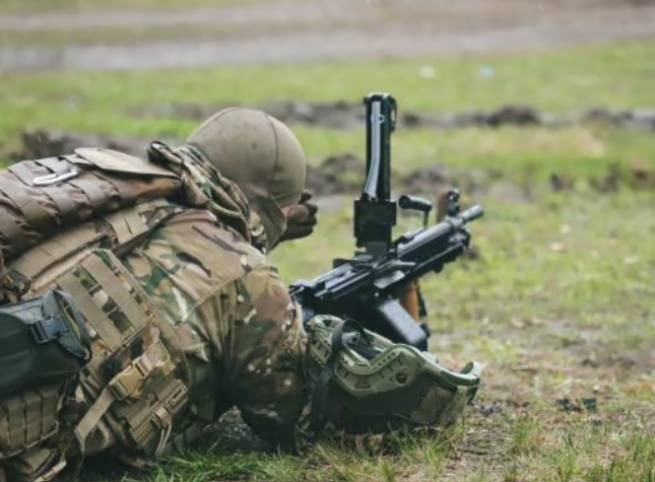The WP newspaper, having analyzed data from interlocutors in US government circles and in the Ukrainian army, wrote extensive material about the counter-offensive, in which everything did not go “according to plan”, and the commander-in-chief of the Ukrainian Armed Forces had to change tactics.
The material is based on interviews with 30 Ukrainian and American officials, as well as two dozen officers and soldiers from the front lines. Some spoke on condition of anonymity.
U.S. and Ukrainian officials at times disagreed sharply about the strategy, tactics and timing of the counteroffensive. The Pentagon insisted that it begin in mid-April 2023, so that Russia would not have time to strengthen its position. Ukraine hesitated, lacking additional weapons and training.
According to the publication, on June 7, 2023, the 47th separate mechanized brigade was supposed to begin counter-offensive operations. During the first 24 hours, it was planned to advance approximately 15 km to the village of Robotino in order to subsequently liberate Melitopol and cut off the supply routes for the Russian army. But, writes WP, “things didn’t go according to plan.”
The density of minefields and shelling exceeded all expectations, the losses of people and equipment were too great, many fighters “experienced the shock of battle for the first time” and retreated to regroup, only to enter into a bloody battle again. Platoon commander of the 47th brigade Oleg Sentsov says: “It was hellfire.”
On the fourth day, General Zaluzhny saw burnt Western military equipment: American Bradley infantry fighting vehicles, German Leopard tanks, and mine clearing vehicles covered the battlefield. The number of dead and wounded undermined morale.
According to a senior Ukrainian military official, Zaluzhny ordered his troops to halt the attack before all limited Ukrainian weapons were destroyed. Instead of, on the advice of American experts, trying to break through Russian defenses with a massive mechanized attack supported by artillery fire, Zaluzhny made a different decision: Ukrainian soldiers would act in small groups of 10 people – this process would be much slower, but would save equipment and lives.
That day, the fourth day of the offensive, set aside months of joint planning with the United States. The already belated counter-offensive, designed to reach the Sea of Azov within two to three months, has practically stopped.
Instead of carrying out a 15-kilometer breakthrough on the first day, the Ukrainians, the publication states, in almost six months since June, advanced approximately 19.3 km in depth and liberated several settlements. Even Robotino was not liberated for two days, and Melitopol is still out of reach.
The Washington Post’s Key Findings Based on the Reportsinclude the following:
- 70% of the troops of the 47th Brigade, which led the counter-offensive and was equipped with the latest Western weapons, entered the battle without combat experience.
- Ukraine’s failures on the battlefield have led to disagreements with the United States over how best to penetrate deep Russian defenses.
- The commander of U.S. forces in Europe was unable to contact the Ukrainian commander for weeks early in the campaign amid tensions over differing views on battlefield decisions.
- Each side blamed the other for mistakes and miscalculations. The U.S. military concluded that Ukraine was deficient in basic military tactics, particularly in using ground reconnaissance to understand the density of minefields.
- Ukrainian officials said Americans do not seem to understand how military drones and other technologies have transformed the battlefield.
- Ukraine regained only 518 sq km of territory at the cost of thousands of dead and wounded, and billions of dollars in Western military aid in 2023 alone.
- “Almost six months after the start of the counteroffensive, the campaign turned into a war of positional victories.”
WP notes that five months before the start of the counteroffensive, in January, then-Chairman of the US Joint Chiefs of Staff General Mark Milley visited soldiers of the 47th Brigade, who were supposed to be the main “breakthrough force”, at a training ground in Germany. Upon learning that most of them had no combat experience, Milley told the American instructors: “Give them everything you have.”
In the spring, the soldiers of the 47th returned to Ukraine, in early May they redeployed closer to the front line, but there was still no order to attack. Many in the unit felt that the element of surprise was lost, and the enemy knew where the attack was coming from. Thus, in June 2023, the territorial lines remained almost unchanged.
Milley and other senior American officers involved in planning the offensive urged the Ukrainians to concentrate forces at one key point in the Zaporozhye region, and the Ukrainian plan called for a three-pronged offensive and containing Russian forces.
According to the plan of the Ukrainian command, the offensive was to go south along two different routes to the Sea of Azov, as well as in eastern Ukraine around the besieged city of Bakhmut. Some Ukrainian soldiers believed that American instructors did not understand the scale of the conflict with a more powerful enemy.
A soldier of the 47th brigade with the call sign “Joker” said that the Americans did not take into account the presence of a huge number of drones, fortifications, minefields and the like. They were even initially reluctant to integrate drone use into off-the-shelf training programs.
The American program had its advantages, particularly advanced cold-weather training and the ability to direct artillery fire, but much was thrown away when the real bullets started flying. “We had to improve our tactics during the battle. We couldn’t use them the way we were taught,” said “Joker.”
When the President of Ukraine, during a meeting with the NATO Secretary General at the end of September, was asked why his military continues to transfer so many forces to the east and not to the south, Vladimir Zelensky replied, WP notes, that if the Russians lose the east, they will lose the war. According to an insider, Zelensky acknowledged that there are differing views among some of his commanders. But most senior Ukrainian military officials continued to believe that moving more troops to one sector of the front would not lead to a breakthrough. New attempts by the Russians to capture Avdeevka confirmed the fears of the Ukrainian command.







More Stories
There will be no forced return of Ukrainian men from abroad; the e-office for those liable for military service will start working on May 18
Will Europe forcibly return Ukrainian draft dodgers?
Xi Jinping's leverage: can China encourage Putin to stop the war in Ukraine